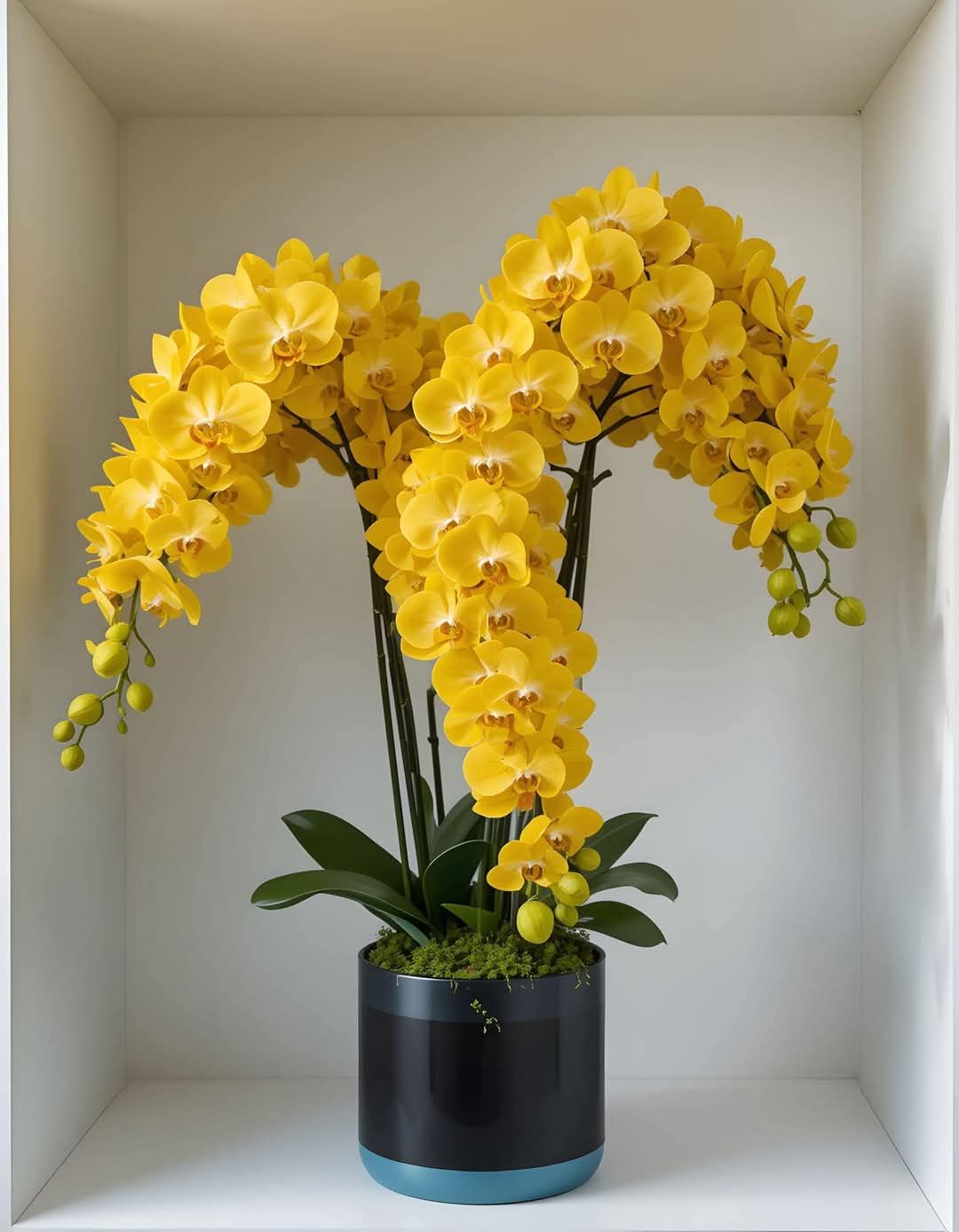Phalaenopsis orchids, commonly known as Moth Orchids, are one of the most popular and beautiful orchids to grow at home. With their stunning blooms and elegant appearance, they can be a wonderful addition to any indoor space. To help your Phalaenopsis thrive, follow these essential care guidelines.
☀️ Light: Bright, Indirect Light is Key
Phalaenopsis orchids require the right amount of light to thrive, but they are sensitive to direct sunlight.
Optimal Light Conditions:
Bright, Indirect Light: These orchids do best when they receive bright, but indirect light. Direct sunlight can burn the leaves, while too little light will prevent blooming.
Best Locations: A window facing east or west is often ideal, as it allows for enough light without the harsh midday sun.
🌡️ Temperature: Warm with Cooler Nights
Phalaenopsis orchids are warm-weather plants and thrive in temperatures that mimic tropical climates.
Temperature Guidelines:
Daytime: They prefer daytime temperatures between 65-80°F (18-27°C).
Nighttime: Slightly cooler temperatures at night, around 60-65°F (15-18°C), help promote blooming.
Avoid Extreme Heat: Keep your orchids away from drafts, air conditioners, and heaters that can cause temperature fluctuations.
💧 Humidity: Moderate to High is Best
Phalaenopsis orchids enjoy high humidity, as they originate from tropical climates where moisture is abundant in the air.
Humidity Tips:
Ideal Humidity Range: Aim for a humidity level of 50-70%.
Increasing Humidity:
Humidifier: Using a humidifier in the room can help maintain the right humidity level.
Pebble Tray: Place the pot on a tray filled with pebbles and water (but make sure the pot isn’t sitting in the water). This helps increase humidity around the plant.
Misting: Occasionally misting the plant can also provide a moisture boost, especially in dry climates.
💦 Watering: Don’t Overwater!
Watering is one of the most important aspects of Phalaenopsis orchid care. Proper watering ensures healthy roots and vibrant blooms.
Watering Guidelines:
When to Water: Water thoroughly when the potting medium feels almost dry to the touch. Check the moisture level in the potting mix regularly.
Avoid Overwatering: Overwatering can lead to root rot, so make sure the orchid isn’t sitting in standing water.
Drainage: Ensure that the pot has proper drainage to allow excess water to escape. Use a pot with holes at the bottom to prevent water from accumulating.
🌱 Potting Medium: Well-Draining Orchid Mix
A well-draining potting mix is crucial for Phalaenopsis orchids, as it helps prevent root rot and provides an ideal environment for healthy root growth.
Potting Medium Tips:
Orchid Mix: Use a special orchid mix that typically contains bark, sphagnum moss, perlite, and charcoal. This mix ensures good drainage while holding enough moisture for the roots.
Avoid Regular Potting Soil: Regular potting soil holds too much moisture and can cause the roots to suffocate.
🍽️ Fertilizing: Feed Your Orchid During the Growing Season
Phalaenopsis orchids are light feeders, but they still need nutrition to thrive and bloom.
Fertilizing Tips:
Balanced Orchid Fertilizer: Use a balanced orchid fertilizer diluted to half strength. Apply it every 2-4 weeks during the growing season (spring and summer).
Reduce in Winter: During the dormant period (usually in winter), cut back on fertilizing. You can either stop completely or use it once a month.
🌺 Repotting: When and How to Repot
Phalaenopsis orchids don’t need frequent repotting, but repotting can help maintain their health and ensure they have enough space to grow.
Repotting Guidelines:
Repot Every 2-3 Years: Repot only when necessary, typically every 2-3 years, to refresh the potting mix and give the orchid more room to grow.
Use Fresh Orchid Mix: When repotting, use a slightly larger pot and fresh orchid mix. Be careful not to damage the delicate roots during the process.
After Blooming: It’s best to repot your orchid after it finishes blooming, so the plant is not stressed.
🌿 Additional Tips for a Healthy Orchid:
Pruning: After the orchid blooms, you can trim the flower spike back to encourage new growth.
Pest Management: Watch out for pests such as aphids, mealybugs, and scale insects. If you notice any pests, treat the plant with a gentle insecticidal soap.
More Articles You Might Like
-
Texas Toast Sloppy Joes: The Crunchy, Cheesy Upgrade You Didn’t Know You Needed
There’s something timeless about sloppy joes. For generations, this saucy, savory, and slightly sweet ground beef sandwich has been a go-to comfort food in American kitchens. It’s quick, filling, and family-friendly—perfect for busy weeknights. But what if we told you there’s a way to take this classic dish up a notch? Enter the Texas Toast…
-
Classic Pig Pickin’ Cake
When it comes to Southern desserts, few sweets shine as brightly as the Classic Pig Pickin’ Cake. This nostalgic cake, sometimes called a “Mandarin Orange Cake,” has roots deep in Southern tradition. It gets its playful name from its frequent appearance at pig pickin’s—Southern-style barbecue gatherings where communities come together to enjoy slow-cooked pork, sides,…
-
Lemon Garlic Butter Chicken with Creamy Parmesan Pasta
There’s something irresistible about the combination of tender, golden-browned chicken paired with a creamy pasta coated in Parmesan cheese. Add the brightness of lemon, the depth of garlic, and the richness of butter, and you have a recipe that feels indulgent yet approachable enough for a weeknight dinner. Lemon Garlic Butter Chicken with Creamy Parmesan…



